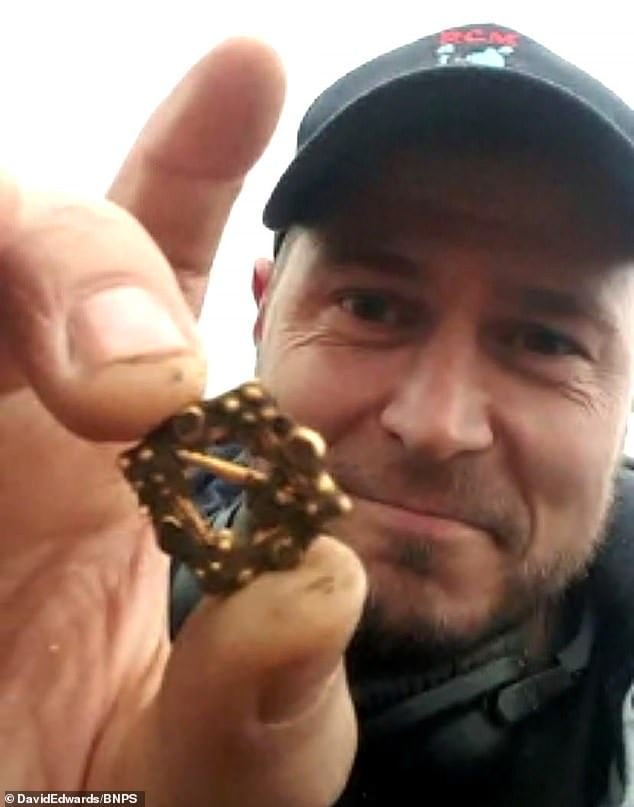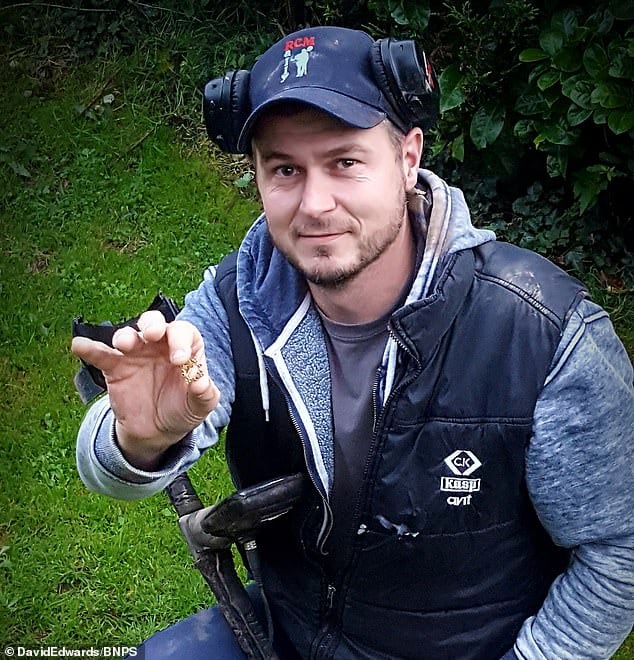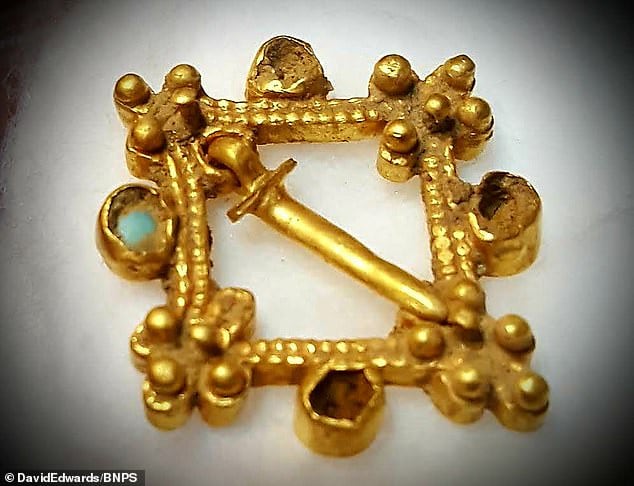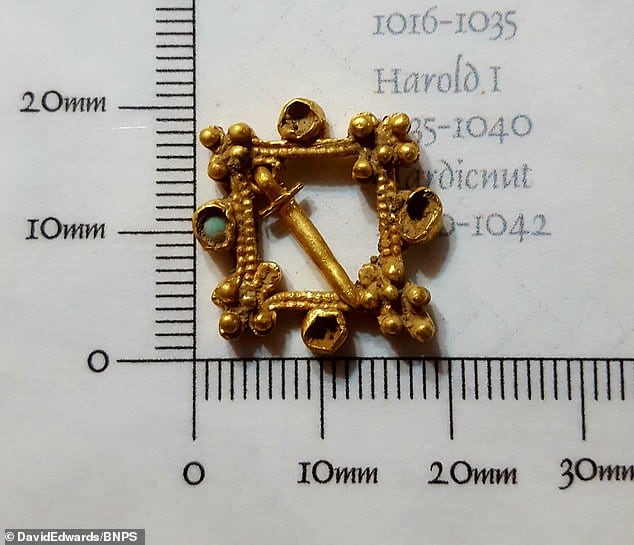A kde jsou jako ty smaragdy?  ...
...
Gold brooch with emerald
Categories: Nálezy nejenom s detektorem ve Velké Británii a Irsku
A father of two (44) found a gold brooch with emeralds in a field near Cardigan, West Wales, using a metal detector. The jewellery is worth at least £10,000, according to experts. It dates back to the thirteenth century.
The brooch was made of 24-carat gold and decorated with emeralds. Some of the stones have fallen out of the jewellery. The jewellery dates from the thirteenth century and could sell at auction for ten times its listed price.
The jewel was discovered by David Edwards' metal detector in clay about ten centimetres below the surface. The brooch was buried in a field near the finder's home in Cardigan. The dad of two made this beautiful discovery when he went searching with a metal detector after work.
The brooch is about two centimetres in width and height and weighs approximately four grams. No other jewelry like it has ever been found, according to experts. The jewel, which dates from the thirteenth century, probably belonged to a nobleman such as a duke or count.
Edwards was stunned when he discovered the jewel. "I remember it was evening and cloudy. I went out after work. I had about an hour before it was completely dark. So I wasn't expecting much from the search. I found the brooch after half an hour of walking around with a metal detector. It was buried upside down in the dirt, so I couldn't see its beautiful and intricate shapes at first glance," recalled the happy finder.
He called his friend, who also goes metal detecting, via FaceTime. "I wanted to throw a speech with him about what I found. When I turned the brooch over, I was excited and started shaking," Edwards added.
The brooch has a sword-shaped "needle" in the center. There is a pin on the back for attachment that still works. "I've seen similar jewelry in books, so I had a hunch the brooch was about 700 years old. When I cleaned the mud off it, I could see its delicate shapes. I had seen similar brooches before, but they were silver. To find something like this made of gold and with such a beautiful stone is really special," said the prospector.
His only regret is that only one emerald of the four precious stones has survived. "It is clear that the jewel belonged to a high-ranking person, not an average farmer. Someone truly noble could afford to wear such a jewel. I found the brooch on the outskirts of Cardigan, so it may have been lost by someone who was travelling. I prefer not to speak of the value of this jewel," Edwards remarked.
Treasure hunting expert and editor of Treasure Hunting magazine Julian Evan-Hart said there is no other artefact that compares to the found brooch. I have no doubt it was worn by a duke or an earl. Maybe someone who was close to the military because of the sword-shaped decoration. Because it's such an exceptional piece of jewellery, it's difficult to estimate the final price at which it will be bought," Evan-Hart believes.
The jewel is now going through a process that will determine whether it is indeed a treasure. Experts say the jewel could sell for up to £100,000.





Source: www.dailymail.co.uk
The article is included in categories:
- Archive of articles > Archaeology > Finds and rescue research abroad > Nálezy nejenom s detektorem ve Velké Británii a Irsku
Post
vidím opaskovou přezku a místo smaragdu je to Jadeit asi někdo špatně přeložil 
Já myslel že smaragd je zelený.
13století? Smaragd? Rakousko – Habachtal
Rusko – Takovaja (Ural)
Egypt – Zabarah (další historické lokality)
Kolumbie – Muso a Chivor – nejznámější lokality vysoce ceněných smaragdů, kde již staří Inkové získávali kvalitní exempláře. Největší vývoz do Evropy se uskutečnil od 16. do 19. století prostřednictvím španělských mořeplavců a obchodníků.
Brazílie – Carnaiba, Minas Gerais, Bahía, Ceará, Goiás
USA, severní Karolína, Hiddenit Mine
Afrika: Nigérie, Tanzanie, Mosambik, Zambie, Zimbabwe, Madagaskar, Jihoafrická republika
Afghánistán, Pákistán, Indie...
Od pohledu to spíš vypadá jako tyrkis (vozily se z východu od Turecka), ale snad si to nevymysleli. Smaragd může být takhle ošklivej a jsou v Rakousku, jak píše Kim.









